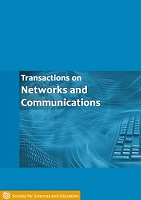Prediction of Breast Cancer images Classification Using Bidirectional Long Short Term Memory and Two-Dimensional Convolutional Neural network
DOI:
https://doi.org/10.14738/tnc.94.10663Keywords:
Keywords: breast cancer, image classification, prediction, biLSTM, conv2DAbstract
Breast cancer is most prevalent among women around the world and Nigeria is no exception in this menace. The increased in survival rate is due to the dramatic advancement in the screening methods, early diagnosis, and discovery in cancer treatments. There is an improvement in different strategies of breast cancer classification. A model for training deep neural networks for classification of breast cancer in histopathological images was developed in this study. However, this images are affected by data unbalance with the support of active learning. The output of the neural network on unlabeled samples was used to calculate weighted information entropy. It is utilized as uncertainty score for automatic selecting both samples with high and low confidence. A threshold that decays over iteration number is used to decide which high confidence samples should be concatenated with manually labeled samples and then used infine-tuning of convolutional neural network. The neural network was optionally trained using weighted cross-entropy loss to better cope with bias towards the majority class. The developed model was compared with the existing model. The accuracy level of 98.3% was achieved for the developed model while the existing model 93.97%. The accuracy gain of 4.33%. was achieved as performance in the prediction of breast cancer .
References
]Andhra Pradesh, (2011) “Analysis of Feature Selection with Classification: Breast Cancer Datasets,” Indian Journal Computer Science& Engineering, vol. 2, no. 5, pp. 756–763.
Chaurasia, Vikas & Pal, Saurabh. (2014). Data mining techniques: To predict and resolve breast cancer survivability. 3. 10-22. https://www.researchgate.net/publication/290483856_Data_mining_techniques_To_predict_and_resolve_breast_cancer_survivability
Christopher, Ngene & Yetunde, Daramola & Dada, Emmanuel. (2018). Performance Comparison of Machine Learning Techniques for Breast Cancer Detection. 10.20286/nova-jeas-060105.
Delen D, Walker G, Kadam A. (2005), Predicting breast cancer survivability: a comparison of three data mining methods. Artificial Intelligence in Medicine. 2005 Jun; 34(2):113-27.doi;10.1016/j.artmed.2004.07.002.PMID:15894176
Djebbari, Amira & Liu, Ziying & Phan, Sieu & Famili, Fazel. (2008). An ensemble machine learning approach to predict survival in breast cancer. International journal of computational biology and drug design. 1. 275-94. 10.1504/IJCBDD.2008.021422.
Hiba Asria ,Hajar Mousannifb ,Hassan Al Moatassime c ,Thomas Noeld.: Using machine learning algorithms for breast cancer risk prediction and diagnosis. Procedia Computer Science 83 (2016) 1064 – 1069
Komura, D., Ishikawa, S.(2018): Machine learning methods for histopathological image analysis. Computational and Structural Biotechnology Journal 16 (2018) 34 – 42 8.
Koziarski, Michał & Kwolek, Bogdan & Cyganek, Boguslaw. (2019). Convolutional Neural Network-Based Classification of Histopathological Images Affected by Data Imbalance: 17th International Conference, ICAISC 2018, Zakopane, Poland, June 3-7, 2018, Proceedings, Part II. 10.1007/978-3-030-12177-8_1.
Lee CH, Dershaw DD, Kopans D, Evans P, Monsees B, Monticciolo D, Brenner RJ, Bassett L, Berg W, Feig S, Hendrick E, Mendelson E, D'Orsi C, Sickles E, Burhenne LW.(2009), Breast cancer screening with imaging: recommendations from the Society of Breast Imaging and the ACR on the use of mammography, breast MRI, breast ultrasound, and other technologies for the detection of clinically occult breast cancer. J Am Coll Radiol. 2010 Jan;7(1):18-27. doi: 10.1016/j.jacr.2009.09.022. PMID: 20129267.
Li H, Giger ML, Lan L, Bancroft Brown J, MacMahon A, Mussman M, Olopade OI, Sennett C. (2012) Computerized analysis of mammographic parenchymal patterns on a large clinical dataset of full-field digital mammograms: robustness study with two high-risk datasets. J Digit Imaging. 2012 Oct;25(5):591-8. doi: 10.1007/s10278-012-9452-z. PMID: 22246204; PMCID: PMC3447101.
Liu, Ya-qin, Wang,Cheng, and Zhang, Lu, (2009),“Decision tree based predictive models for breast cancer survivability on imbalanced data,” 3rd International Conference on Bioinformatics and Biomedical Engineering book ISBN :978-1-4244-2901-1book e-ISBN :978-1-4244-2902-8DOI10.1109/ICBBE.2009.5162571pp. 1–4,
Peter Adebayo Idowu, Kehinde Oladipo Williams, Jeremiah Ademola Balogun & Adeniran Ishola Oluwaranti (2015). Breast cancer risk prediction using data mining classification techniques on transactions on networks and communication volume 3, Issue 2 issn 2054 -7420 DOI: 10.14738/tnc.32.662PublicationDate:10thMarch2015URL: http://dx.doi.org/10.14738/tnc.32.662
Siegel R. L., Miller K. D., Jemal A., “Cancer statistics, 2016,” CA Cancer J. Clin. 66(1), 7–30 (2016).10.3322/caac.21332 [PubMed] [CrossRef] [Google Scholar]
Spanhol, F., Oliveira, L., Petitjean, C., Heutte, L. (2016): A dataset for breast cancer histopathological image classification. IEEE Transactions on Biomedical Engineering, VOL. 63, NO. 7, 1455–1462 9.
Thorsten Joachims (1999). Transductive Inference for Text Classification Using Support Vector Machines. Icml. 1999; 99:200-209. doi:10.4218/etrij.10.0109.0425.
Vikas S,Thimmaraju S N, (2019). “Breast Cancer Diagnosis and Classification Using Support Vector machines with Diverse Datasets”. International Journal of Computer Sciences and Engineering, 7(4), 442 -446
Downloads
Published
How to Cite
Issue
Section
License
Copyright (c) 2021 oluwashola David Adeniji

This work is licensed under a Creative Commons Attribution 4.0 International License.






